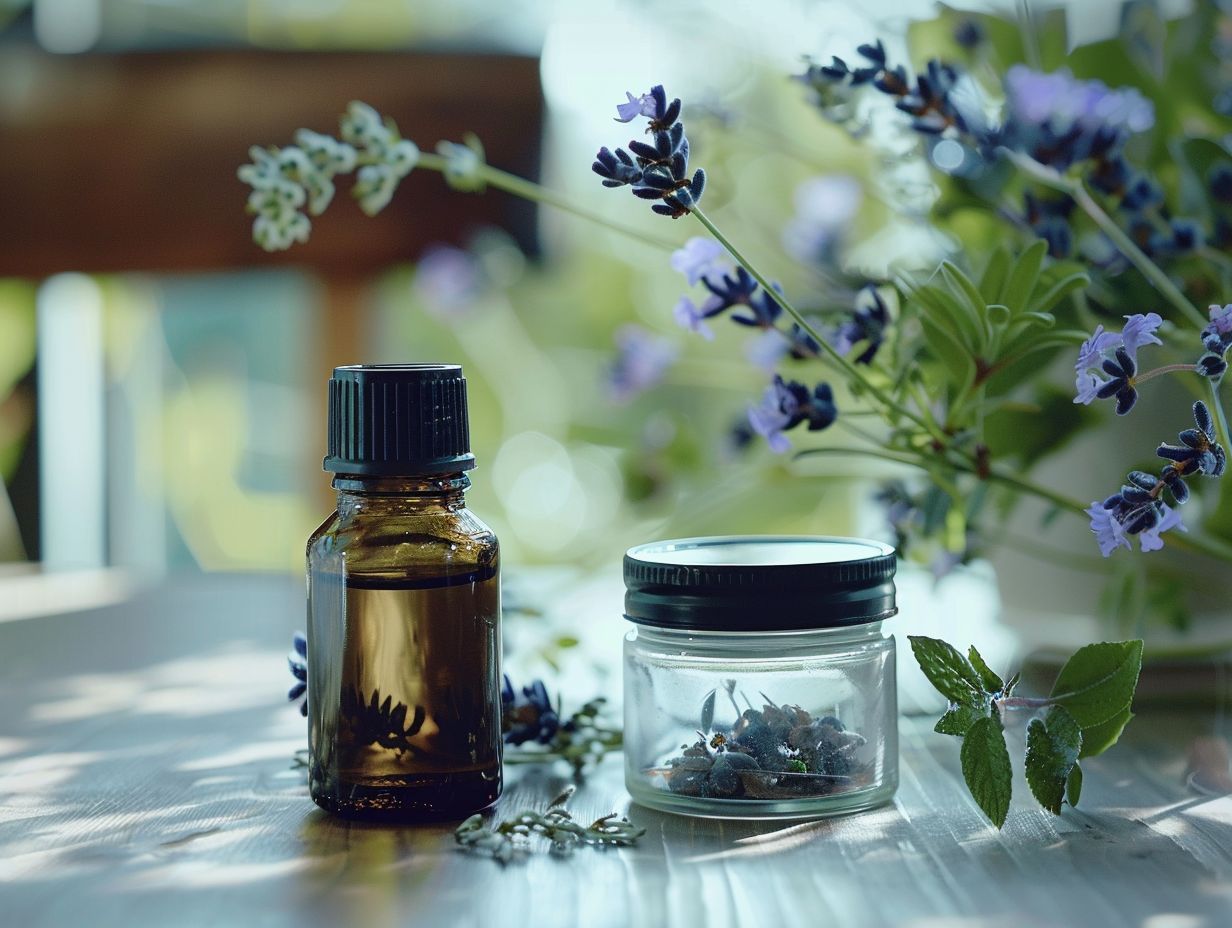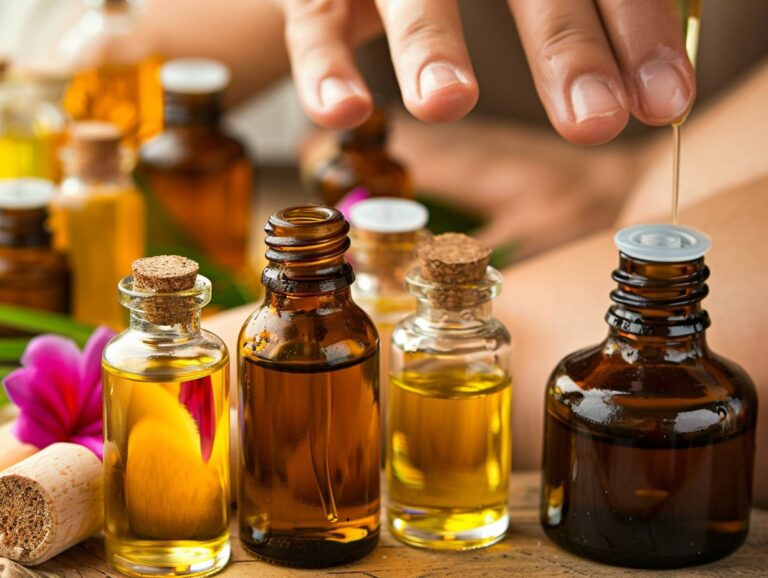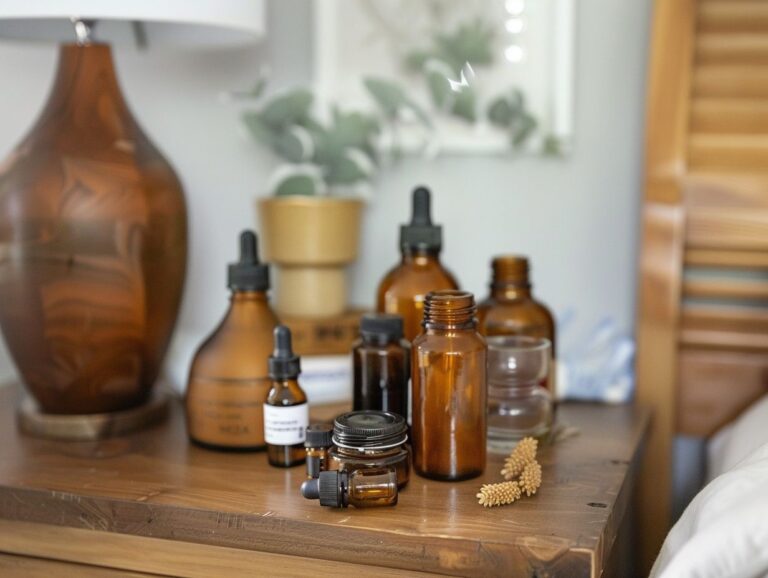Can You Mix Essential Oils With Aquaphor
Have you ever wondered if you can mix essential oils with Aquaphor?
We explore the safety, benefits, and risks of combining these two ingredients. We will also discuss the recommended ratio of essential oils to Aquaphor, the best essential oils to use, and the various uses of this mixture for skincare and aromatherapy.
Learn how to create and use this blend effectively for your health and wellness needs!
Key Takeaways:
What is Aquaphor?
Aquaphor is a popular healing ointment that is commonly used to protect and soothe dry, cracked, or irritated skin. It is known for its gentle, non-irritating formula that helps restore smooth and healthy skin.
Its rich composition includes ingredients like petrolatum, mineral oil, and glycerin, forming a protective barrier over the skin to lock in moisture and enhance the skin’s natural healing process. This versatile ointment is not only beneficial for skincare but also widely used in wound healing, helping to create an optimal environment for healing without causing further irritation.
- Aquaphor acts as a reliable aid in addressing issues like chapped lips, diaper rash, minor cuts, and scrapes, providing a safe and effective solution for common skin concerns.
- The lightweight texture of Aquaphor makes it easy to apply, delivering long-lasting hydration and protection, making it suitable for daily use for all skin types, including sensitive and delicate skin.
What are Essential Oils?
Essential oils are concentrated plant extracts that capture the natural aroma and flavor of the plant. They are often used in aromatherapy and natural skincare products for their therapeutic properties and pleasant scents.
Extracted through methods like steam distillation or cold pressing, essential oils retain the plant’s beneficial compounds, making them highly potent. Their versatility allows for a wide range of applications, from promoting relaxation and improving mood in aromatherapy to nurturing the skin in cosmetics. These oils contain unique molecular structures that interact with the body’s chemistry, offering various health benefits when inhaled or applied topically. Embracing the power of nature, essential oils have gained popularity for their natural and holistic approach to wellness.
Can You Mix Essential Oils with Aquaphor?
Mixing essential oils with Aquaphor is a common practice to enhance the benefits of both products. It allows for a personalized approach to skincare and treatment, combining the soothing properties of Aquaphor with the therapeutic effects of essential oils.
When essential oils are carefully selected and blended with Aquaphor, they can address various skin concerns such as dryness, irritation, and inflammation, offering a holistic solution. The key is to use high-quality, therapeutic-grade oils that contain pure, concentrated plant extracts.
This combination creates a synergy that amplifies the beneficial properties of each ingredient, leading to more potent and effective outcomes. Remember, the purity of the Aquaphor used is equally essential, as it provides a neutral base for the oils to work effectively without any added irritants.
Is It Safe to Mix Essential Oils with Aquaphor?
When done correctly and in appropriate dilutions, mixing essential oils with Aquaphor is generally considered safe. It is crucial to follow proper guidelines and ensure the quality and purity of both the oils and the base ointment.
Essential oils are highly concentrated extracts derived from plants, renowned for their aromatherapy and potential health benefits. Aquaphor, on the other hand, is a popular over-the-counter ointment known for its skin-soothing properties.
To maintain safety, it is vital to dilute essential oils properly before combining them with Aquaphor. This helps prevent skin irritation or sensitivities that may arise from direct contact with undiluted oils.
Ensuring the authenticity and quality of the essential oils used is paramount, as impurities or synthetic additives can pose risks to the skin and overall health.
What are the Benefits of Mixing Essential Oils with Aquaphor?
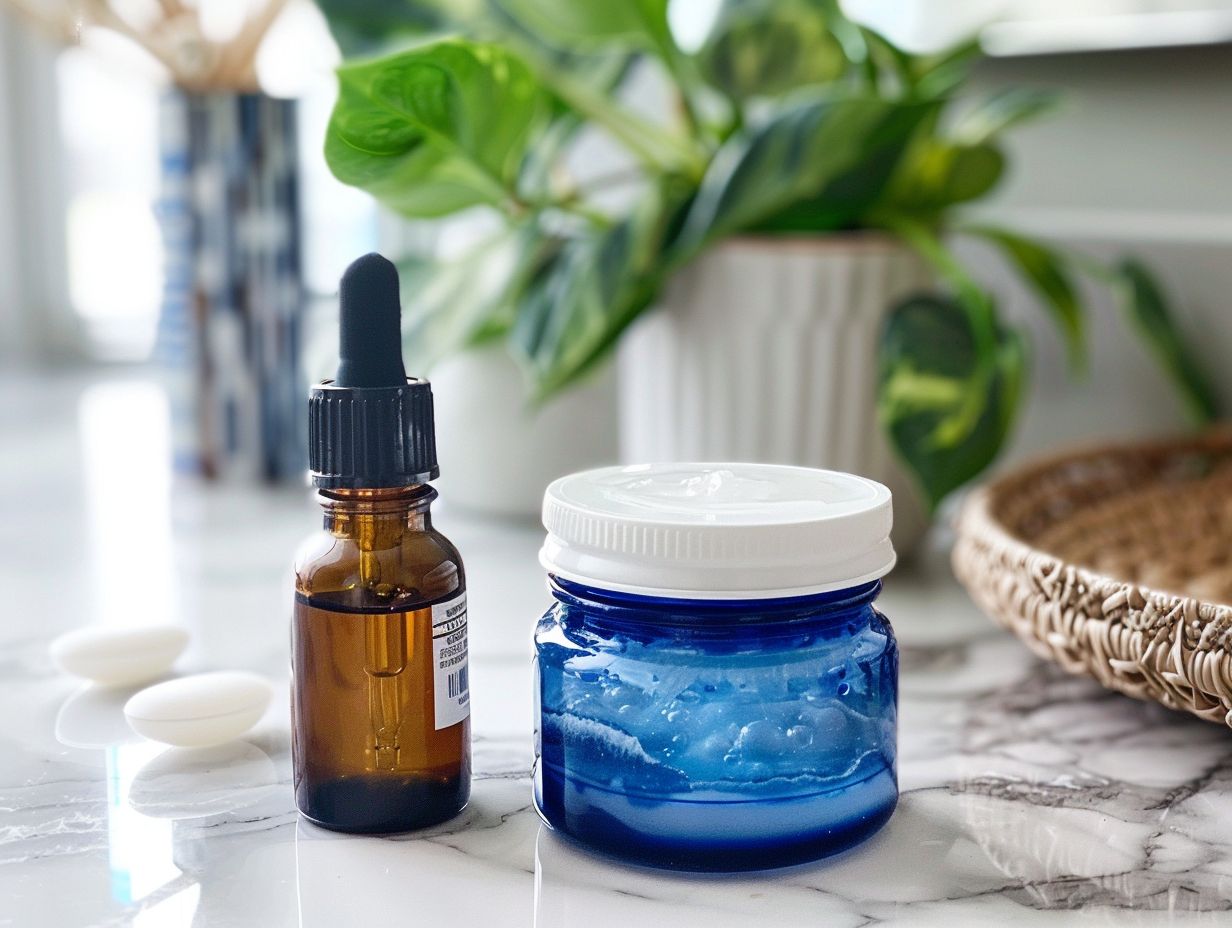
By blending essential oils with Aquaphor, one can tap into the synergistic effects of both, creating a potent concoction that caters to various skin types and conditions. The versatility of this blend allows individuals to customize their skincare routine based on their needs, be it soothing sensitive skin with lavender or rejuvenating dry skin with frankincense.
The therapeutic benefits of using high-quality, therapeutic-grade oils in conjunction with Aquaphor cannot be understated. Quality control ensures purity and potency, elevating the efficacy of the blend and maximizing its therapeutic properties.
What are the Risks of Mixing Essential Oils with Aquaphor?
While mixing essential oils with Aquaphor is generally safe for external use, there are risks associated with internal use and improper dilutions. It is important to be cautious with ingestion and to always consult a healthcare professional before using such mixtures internally.
One of the significant risks of combining essential oils with Aquaphor for internal use is the potential toxicity that can arise from certain essential oils. Some essential oils, if ingested in high concentrations or without proper dilution, can lead to severe adverse effects on the body, including liver damage, gastrointestinal issues, and even neurological problems. The FDA strictly regulates the internal use of essential oils due to these risks, and it is crucial to adhere to these guidelines to ensure safety.
How to Mix Essential Oils with Aquaphor?
Mixing essential oils with Aquaphor requires careful measurement and proportioning to achieve the desired effects. Understanding the distillation methods of the oils and the production process of Aquaphor can help in creating effective blends.
When combining essential oils with Aquaphor, it’s crucial to ensure the exact amounts of each component to maintain the intended therapeutic properties. Accurate measurement is essential, as even slight variations can alter the final mixture’s efficacy. Ahead of blending, it’s advisable to assess the compatibility of chosen oils with Aquaphor to avoid adverse reactions. By familiarizing oneself with different distillation techniques used to extract essential oils, one can select the most suitable oils for specific purposes, enhancing the overall quality of the blend.
What is the Recommended Ratio of Essential Oils to Aquaphor?
The recommended ratio of essential oils to Aquaphor varies depending on the type of oils used and the desired potency. It is advisable to start with a small amount and test the mixture on a small skin patch for any adverse reactions.
Blending essential oils with Aquaphor is a delicate process that requires precision and care. Distillation techniques play a crucial role in extracting pure oils for optimal results.
Quality assessment is vital to ensure the efficacy and safety of the final blend. Utilizing Gas Chromatography Mass Spectrometry allows for detailed analysis of the chemical composition, ensuring that the oils are free from contaminants and impurities. This advanced technology provides valuable insights into the purity and authenticity of the essential oils, guiding adjustments in the blending ratios for a perfect formulation.
What are the Best Essential Oils to Mix with Aquaphor?
The best essential oils to mix with Aquaphor are those that complement its properties and offer additional benefits. Oils sourced from reputable distillers and certified as therapeutic grade are preferred for quality and efficacy.
One of the top essential oils that blends well with Aquaphor is lavender oil. Known for its calming properties, lavender oil can soothe skin irritations and promote relaxation. When combined with Aquaphor, it can create a gentle yet effective skin-nourishing blend.
Another popular option is tea tree oil, celebrated for its antibacterial and antifungal properties. A few drops of tea tree oil mixed with Aquaphor can help address various skin concerns, such as acne or minor cuts. When choosing essential oils for blending, pay attention to the purity and quality of the oil to maximize the therapeutic benefits.
What are the Uses of Mixing Essential Oils with Aquaphor?
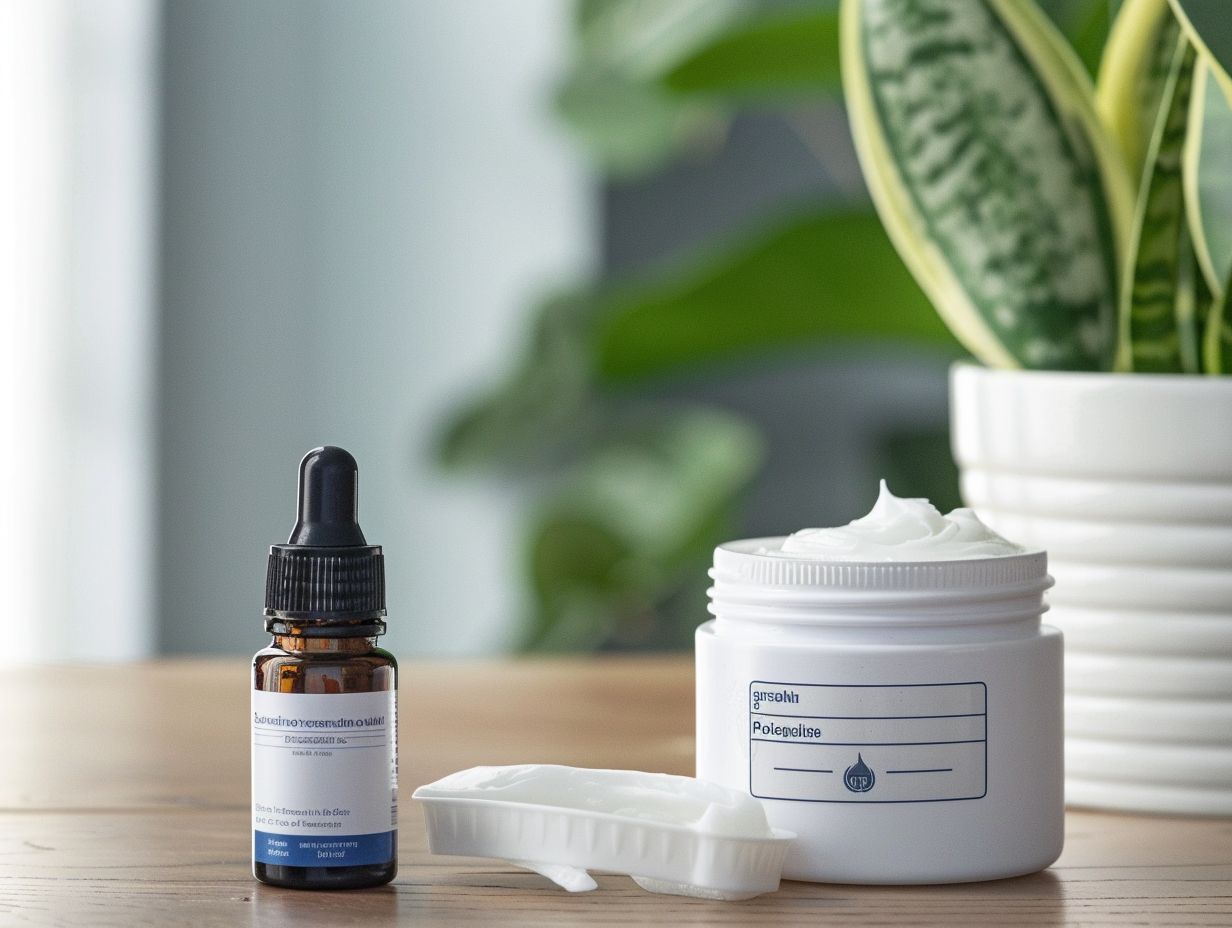
Mixing essential oils with Aquaphor can be utilized for skincare, aromatherapy, and targeted treatment of skin conditions. Understanding the shelf life and delivery methods of the blend is essential for maintaining efficacy.
When incorporating essential oils into your skincare routine, it’s important to consider the compatibility of different oils with Aquaphor to achieve optimal results. In the realm of aromatherapy, blending these aromatic oils with Aquaphor can enhance relaxation or invigoration, depending on the desired effect. For specialized skin treatments, such as addressing eczema or psoriasis, a carefully formulated mixture of Aquaphor and specific essential oils can provide soothing relief and aid in skin repair.
Can You Use the Mixture for Skincare?
The mixture of essential oils with Aquaphor is suitable for skincare routines, providing hydration, nourishment, and targeted solutions for various skin concerns. It is essential to source high-quality oils and understand the internal use precautions.
Using a blend of essential oils with Aquaphor has numerous benefits for the skin. The moisturizing effects are profound, thanks to the combination’s ability to lock in moisture and prevent transepidermal water loss, keeping the skin soft and supple. The healing properties of these oils can aid in reducing inflammation, soothing irritations, and promoting cell regeneration for healthier skin.
Incorporating this blend into your skincare routine can help improve overall skin health by providing antioxidants and essential nutrients that nourish and protect the skin from environmental damage. Sourcing oils from reputable suppliers ensures the purity and effectiveness of the blend, while efficient shipping management for international delivery ensures timely access to these beneficial skincare ingredients.
Can You Use the Mixture for Aromatherapy?
The mixture of essential oils with Aquaphor can enhance aromatherapy experiences, providing soothing scents and therapeutic benefits during relaxation sessions. Working with reputable distillers and managing handling fees ensures the quality of the blend.
When incorporating essential oils into an Aquaphor base, it’s crucial to consider the blend’s intended effects. Lavender and chamomile, for instance, can promote relaxation and alleviate stress, while peppermint and eucalyptus offer refreshing and invigorating properties. These carefully selected combinations not only create an olfactory delight but also positively influence mood and well-being.
To achieve optimal results, it’s recommended to source oils from trusted distillers known for their high-quality products. This ensures the purity and efficacy of the essential oils, guaranteeing a safe and effective blend for aromatherapy use. Despite potential handling fees associated with international shipping for premium ingredients, investing in top-notch oils is well worth it for the enhanced therapeutic benefits they provide.
How to Use the Mixture of Essential Oils and Aquaphor?
Utilizing the mixture of essential oils with Aquaphor involves applying the blend to clean, dry skin in gentle circular motions. Proper skin preparation is crucial before application, ensuring that the skin is free of any debris or residue to maximize absorption. Once the blend is prepared, take a small amount and warm it between your fingertips before gently pressing it onto the skin. Incorporating a facial roller after applying can aid in better product penetration and blood circulation. For those unsure of committing to a full-size product, many companies offer free samples or travel-sized options for experimentation before making a purchase.
When selecting essential oils, consider your skin type and any specific concerns you wish to address, such as hydration, aging, or inflammation. A popular blend for all skin types includes lavender, tea tree, and frankincense oils mixed with Aquaphor. These oils provide a soothing and rejuvenating effect on the skin, making them ideal for daily use. Prices for essential oils vary depending on the brand and quality, with some affordable options available for those on a budget.
To ensure the best results, apply the mixture at night before bed to allow the oils to work their magic overnight. Regular application will help maintain skin moisture and enhance its overall appearance, reducing the appearance of fine lines and wrinkles over time. Remember to store your oils in a cool, dark place to prevent degradation and maintain their effectiveness.
How to Use the Mixture for Skincare?
For skincare purposes, the mixture of essential oils with Aquaphor can be used as a nourishing balm or spot treatment to address specific skin issues.
When applying this blend, it’s essential to start with a clean face to allow optimal absorption. Mixing a small amount of Aquaphor with a few drops of essential oils like lavender or tea tree oil can create a potent solution for dry skin or acne spots. The soothing and moisturizing properties of Aquaphor combined with the healing benefits of essential oils work together to provide targeted relief.
How to Use the Mixture for Aromatherapy?
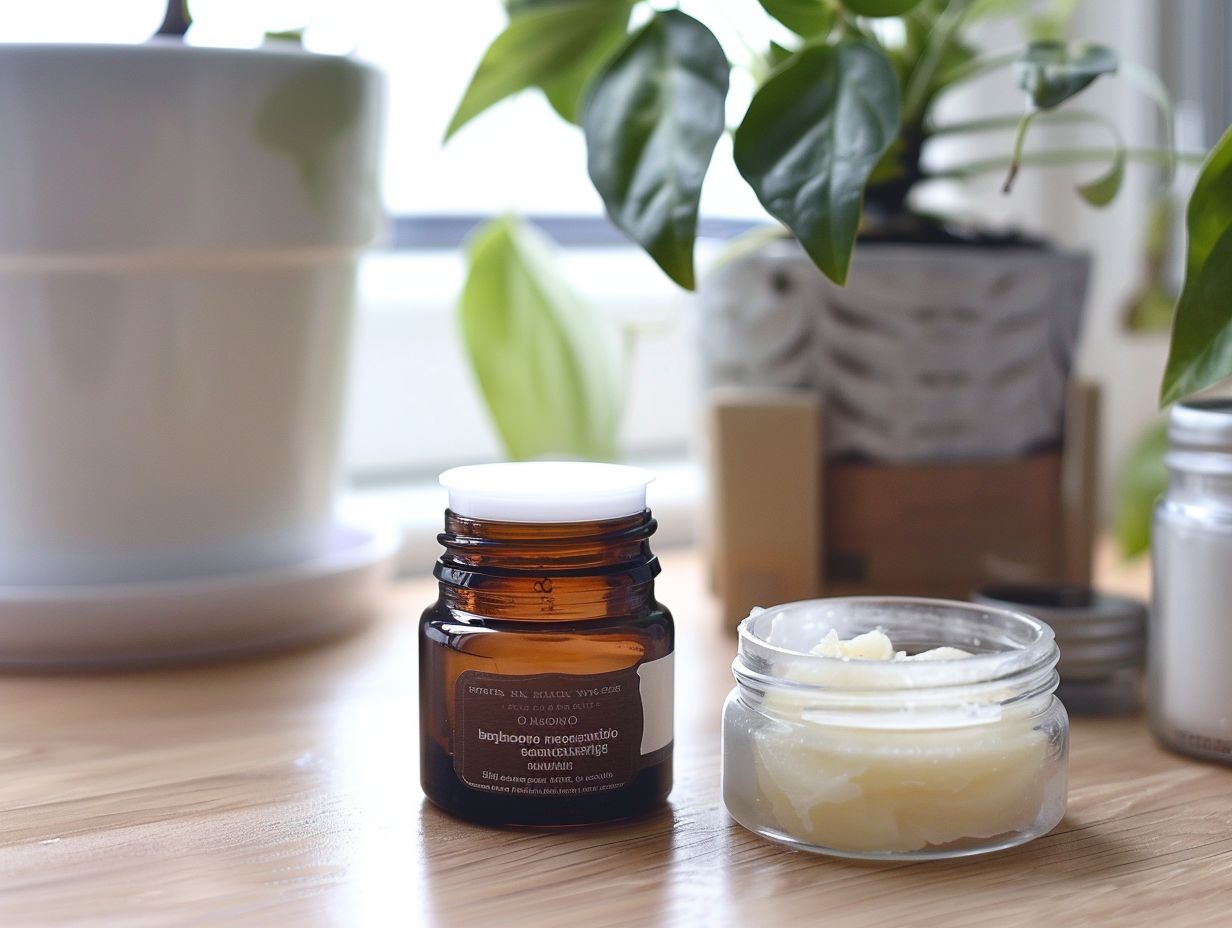
Diffusion is a common technique where essential oils are dispersed into the air through various methods like diffusers or nebulizers, allowing their aromas to fill the room and offer therapeutic benefits.
For topical application, combining essential oils with a carrier like Aquaphor and applying them to pulse points, such as wrists or temples, helps the oils penetrate the skin for direct absorption.
When used in massage therapy, essential oils blended with a carrier oil like Aquaphor can enhance relaxation, relieve muscle tension, and promote overall well-being.
Working with USDA-certified suppliers guarantees that the oils are sourced ethically and free from harmful additives, providing a pure and effective product for aromatherapy practices.
Efficient delivery processes streamline the supply chain, ensuring that authentic essential oils reach consumers promptly and in optimal condition, maintaining their therapeutic properties intact.
Frequently Asked Questions
Can you mix essential oils with Aquaphor?
Yes, you can mix essential oils with Aquaphor. However, it is important to do so carefully and in proper ratios to avoid any potential adverse reactions.
What are some essential oils that can be safely mixed with Aquaphor?
Lavender, tea tree, and chamomile essential oils are commonly mixed with Aquaphor and are safe for most skin types. It is always recommended to do a patch test first to ensure no allergic reactions occur.
Can mixing essential oils with Aquaphor make it more effective?
Yes, mixing essential oils with Aquaphor can enhance its effectiveness. Essential oils have various therapeutic properties that can complement the moisturizing and protective properties of Aquaphor.
Are there any essential oils that should not be mixed with Aquaphor?
Yes, there are certain essential oils that may not be suitable for mixing with Aquaphor. Oils such as citrus oils, peppermint, and clove can be too harsh for the skin and may cause irritation. It is best to avoid these oils or use them in very small amounts.
How do I mix essential oils with Aquaphor?
Add a few drops of your chosen essential oil to a small amount of Aquaphor and mix well. You can adjust the ratio of essential oil to Aquaphor based on your preference and skin type. It is always recommended to start with a small amount and gradually increase if needed.
Can I use the mixture of essential oils and Aquaphor on my face?
Yes, you can use the mixture of essential oils and Aquaphor on your face. However, it is important to be cautious and avoid getting the mixture in your eyes or mouth. It is also recommended to do a patch test first, especially if you have sensitive skin.

